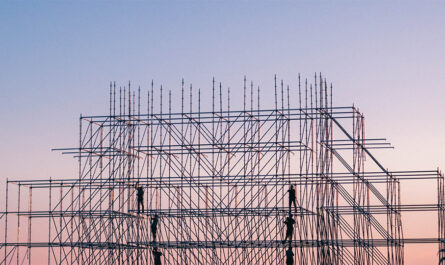Fireproof building materials have become an indispensable part of modern construction with growing concerns around fire safety. One such crucial fireproofing component is cladding – the external walls or facades of buildings. Advancements in cladding technology now allow architects and engineers to design aesthetically pleasing exteriors while ensuring optimal fire protection. This article explores the need for fireproof cladding along with the various cladding options available in today’s market.
The Need for Fireproof Cladding
Building fireproof cladding can have devastating consequences in terms of loss of lives and property. According to recent statistics, fires caused by combustible cladding materials have led to multiple building collapses globally. Traditional cladding materials like aluminum composites panels have poor fire resistant properties. They contribute to rapid fire spread by releasing toxic fumes when exposed to flames.
Fireproof cladding plays a vital role in preventing fire from spreading to external walls and across adjoining buildings. In case of an internal fire, fireproof cladding ensures that the flames are contained within and do not penetrate through to endanger lives of people nearby. This provides more time for evacuation and rescue operations. Fireproof cladding also protects the building structure from premature collapse due to weakening or melting of external walls in a fire.
Types of Fireproof Cladding Systems
A wide range of fireproof cladding options tested and certified for enhanced fire resistance are available today:
Stone/Terracotta Cladding: Natural stone and terracotta continue to be excellent choices for fireproof cladding due to their non-combustible properties. Granite, limestone and terracotta have proven fire resistance up to four hours without any flame spread. Advances like lightweight concrete-based terracotta or synthetic stone offer modern aesthetics.
Brick Cladding: Fired-clay brick is one of the most reliable fireproof cladding materials. Dense concrete brick or aerated concrete cladding are favorable for their fire resistance, structural integrity as well as lighter weight. Some innovations use thin brick slabs for enhanced aesthetics.
Cement-Fiber Composite Cladding: Made of mineral-based cement reinforced with inorganic fibers, cement-fiber composites are durable and resistant to high temperatures. Being non-combustible, cement-fiber cladding provides 2-4 hours of fire protection. Variants offer customizable textures, paints and shapes for appealing looks.
Metal Cladding: Several fireproof metal cladding options like stainless steel, zinc-aluminum and titanium-zinc alloys exhibit exceptional durability against flames and heat. Their non-combustible nature ensures no flame spread. Installation techniques allow seamless incorporation with insulation systems for maximum fire resistance.
Planning and Installation Considerations
Proper material selection is crucial but careful planning and compliant installation are equally important for fireproof cladding to deliver optimum protection. Some key factors to consider:
-Consult certified providers to understand cladding fire testing standards and ratings required for a given building occupant load and height.
-Detailed drawings incorporating construction joints, expansion joints, backing structures as well as interactions with doors/windows must comply with building codes.
-Qualified installers following the approved methodology are vital. Joints, interfaces and interfacing elements need to be installed with specified sealants and firestops.
-Regular inspection and maintenance ensure cladding integrity is retained over the building lifecycle amid environmental exposures. Damaged areas need timely repair.
Conclusion
Fire incidences reveal the need for proactive fire safety designs employing reliable fireproof cladding. With advanced cladding technologies available today, architects can fulfill aesthetic requirements while providing robust external flame barriers. Combined with aware planning and compliant installation, fireproof cladding plays a defining role in mitigating fire spread and structural collapses, thereby protecting lives and minimizing property damage. Leveraging expertise, standards and best practices can reap maximum benefits of these intelligent solutions.
*Note:
- Source: Coherent Market Insights, Public sources, Desk research
- We have leveraged AI tools to mine information and compile it



